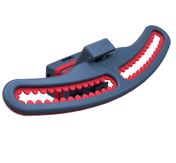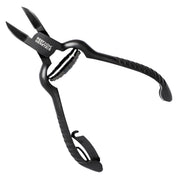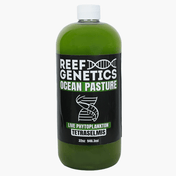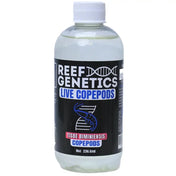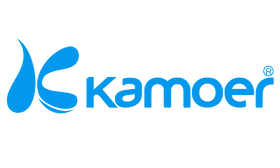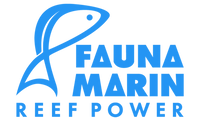Introduction: What is Montipora
Montipora is a popular small polyp stony (SPS) coral genus that serves as an excellent stepping stone for reef keepers transitioning from LPS to advanced SPS corals. This comprehensive guide covers everything from basic Montipora identification to advanced care techniques for optimal growth and coloration.
This guide provides reef keepers with essential knowledge about Montipora types, specific care requirements, optimal placement strategies, and solutions to common challenges. Whether you’re maintaining your first home aquarium or expanding an established reef system, understanding Montipora corals opens the door to successful SPS coral keeping.
Understanding Montipora: Key Concepts and Coral Classification
Core Definitions
Montipora represents a diverse genus of small polyp stony corals originating from coral reefs throughout the Indo-Pacific region, including the Southern Pacific Ocean and Western Indian Ocean. These corals belong to the Scleractinia order and Acroporidae family, making them close relatives to Acropora species but with distinct characteristics that make them hardier choices for reef keepers.
Common synonyms include “Monti” among hobbyists, and they’re classified as SPS corals due to their small polyp size and calcium carbonate skeletal structure. Unlike their Atlantic Ocean cousins, Indo-Pacific Montipora species have adapted to stable conditions in tropical lagoons and reef environments, making them excellent candidates for home aquarium systems.
Montipora Growth Forms and Relationships
Montipora corals exhibit three primary growth forms that determine their placement and care requirements in reef tanks. Encrusting varieties spread across rocks and tank surfaces, creating foundational reef structure. Plating species, commonly called “Monti caps,” develop horizontal, plate-like formations that can shade areas below. Branching forms, particularly Montipora digitata, create upright, finger-like colonies that add vertical dimension to reef displays.
Understanding these growth forms creates a clear progression in SPS coral mastery: Montipora care confidence leads to advanced SPS keeping skills, which ultimately enables successful Acropora cultivation. This genus serves as the perfect bridge between hardy soft corals and demanding small polyp stony species.
Why Montipora is Essential in Modern Reef Keeping
Montipora species demonstrate 40-50% higher survival rates in home aquarium environments compared to Acropora species, making them invaluable for reef keepers developing SPS expertise. Their enhanced tolerance to parameter fluctuations allows hobbyists to refine water chemistry management skills without the immediate consequences often seen with more sensitive corals.
These fast growing corals provide multiple benefits beyond their forgiving nature. Montipora colonies rapidly establish calcium carbonate framework, mimicking natural reef building structure. Their diverse color range—from vibrant blues and purples to subtle browns and greens—creates stunning visual displays while maintaining sufficient hardiness for consistent growth.
The multitude of available species and growth forms allows reef keepers to experiment with different placement strategies and tank designs. Members of this genus actively contribute to tank stability by consuming nutrients from the water column and providing natural biological filtration through their tissue and polyp activity.
Montipora Types Comparison
Montipora capricornis is a plating or cap variety that is suitable for beginners. It thrives under lighting levels between 150 and 250 PAR and is best placed in the mid to upper areas of the tank. This species grows at a rate of approximately 2 to 3 inches per year.
Montipora digitata, a branching type, is also beginner-friendly. It prefers higher light intensity, ranging from 200 to 300 PAR, and should be positioned in the upper sections of the tank. Its growth rate is faster, typically reaching 3 to 4 inches annually.
Montipora spongodes is an encrusting species ideal for beginners as well. It requires moderate lighting between 125 and 200 PAR and does well in the lower to mid-levels of the aquarium. This coral grows more slowly, at about 1 to 2 inches per year.
Step-by-Step Montipora Care Guide
Step 1: Tank Preparation and Water Parameters
Establish rock-solid water chemistry before introducing any new Montipora specimens to your reef system. Maintain alkalinity between 7-8 dKH, calcium levels at 400-450 ppm, and magnesium concentrations from 1200-1400 ppm. These parameters support healthy skeletal growth and prevent the tissue necrosis issues that plague SPS corals in unstable conditions.
Temperature stability proves critical for Montipora success—maintain consistent temperatures within the 75-77°F range with minimal fluctuation. Install reliable heating and cooling systems that prevent temperature swings exceeding 0.5°F during daily cycles. Keep nitrate levels below 5 ppm and phosphate around 0.01 ppm to prevent algae competition and maintain coral health.
Create a pre-placement checklist including alkalinity testing, calcium verification, and salinity confirmation. Test these parameters weekly during the initial establishment period, then maintain consistent monitoring schedules as your colony develops.
Step 2: Lighting and Placement Setup
Begin Montipora acclimation with conservative lighting levels around 100-150 PAR, gradually increasing intensity to 200-250 PAR over 2-4 weeks. This gradual approach prevents light shock while allowing the coral’s symbiotic algae to adjust to your tank’s specific lighting spectrum and intensity.
LED lighting systems work exceptionally well for Montipora species, particularly those emphasizing blue spectrum output that enhances natural fluorescence. Position new corals in mid-tank locations initially, then adjust placement based on growth response and coloration development.
Consider growth form when selecting permanent placement locations. Encrusting varieties thrive on vertical rock faces and tank bottoms, while Monti caps require elevated positions with sufficient space for horizontal expansion. Branching species need adequate water flow from multiple directions and room for upward growth without creating excessive shade for neighboring corals.
Step 3: Flow and Feeding Optimization
Establish high-velocity, random water flow patterns throughout your tank using multiple powerheads positioned to eliminate dead spots. Montipora colonies require good flow to prevent detritus accumulation and deliver food particles to their small polyp structures. Avoid direct powerhead blasts that can damage delicate tissue or create excessive stress.
Monitor plating species carefully for debris collection on horizontal surfaces—insufficient flow allows organic matter to settle and decompose, potentially causing tissue recession. Adjust powerhead positioning seasonally as colonies grow and alter flow patterns within your display.
Supplement natural feeding with amino acids and small zooplankton including rotifers and cyclops. Broadcast feeding works more effectively than target feeding for Montipora species due to their small polyp size. Feed during evening hours when polyps extend naturally, and maintain feeding consistency to support optimal growth rates.
Common Montipora Care Mistakes to Avoid
Maintaining alkalinity above 10 dKH frequently triggers STN (Slow Tissue Necrosis) or RTN (Rapid Tissue Necrosis) in Montipora colonies. These conditions cause irreversible tissue loss and colony death. Keep alkalinity stable within the 7-8 dKH range rather than chasing higher numbers that stress coral metabolism.
Placement errors create long-term problems in reef tanks. Positioning Monti caps above other corals creates permanent shading that stunts growth in lower colonies. Plan vertical space carefully and consider mature colony size when selecting initial placement locations.
Ignoring early warning signs of Montipora-eating nudibranchs leads to devastating colony loss. These small, white pests appear as rice-grain-sized creatures that consume coral tissue rapidly. Weekly visual inspections help identify pest issues before they become uncontrollable infestations.
Pro Tip: Weekly alkalinity testing combined with thorough visual coral inspection prevents most Montipora failures. Consistent monitoring catches parameter drift and pest issues during early, manageable stages.
Frequently Asked Questions About Montipora
Q1: What’s the difference between Montipora and Acropora care requirements?
A1: Montipora tolerate slightly lower lighting (200-300 PAR vs 300-400 PAR) and are more forgiving of parameter fluctuations, making them ideal starter SPS corals for reef keepers developing advanced techniques.
Q2: How fast do Montipora grow and when should I frag them?
A2: Most Montipora species grow 1-3 inches annually under optimal conditions. Begin fragging when colonies reach 3-4 inches to maintain proper water flow and prevent overcrowding in reef tanks.
Q3: Can I keep Montipora in a nano reef tank?
A3: Yes, but maintaining stable parameters requires more careful attention due to smaller water volume. Focus on encrusting varieties rather than large plating species that quickly outgrow limited space.
Q4: How do I identify and treat Montipora-eating nudibranchs?
A4: Look for white, rice-grain sized pests on coral tissue and observe areas of tissue recession. Treat infestations with repeated coral dips in appropriate solutions and consider introducing natural predators like certain wrasse species to control populations.
Conclusion: Key Takeaways for Montipora Success
Master these five critical elements for consistent Montipora success: maintain stable water chemistry within established ranges, acclimate lighting gradually over extended periods, provide proper flow management without dead spots, implement proactive pest prevention through regular inspection, and make gradual parameter adjustments rather than dramatic changes.
Join local reef clubs for frag exchanges and document growth progress to refine your techniques. Remember that Montipora mastery serves as your gateway to advanced SPS reef keeping, building the skills and confidence needed for the next half of your reef keeping efforts toward maintaining demanding Acropora species and complex reef ecosystems.

